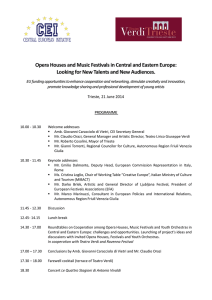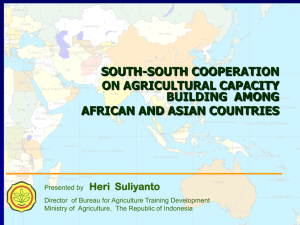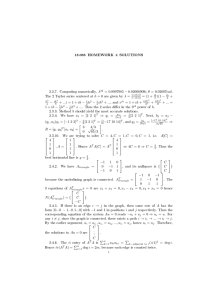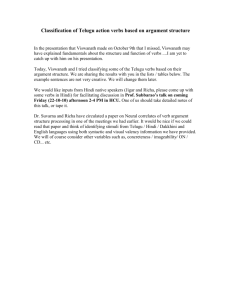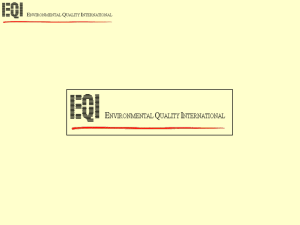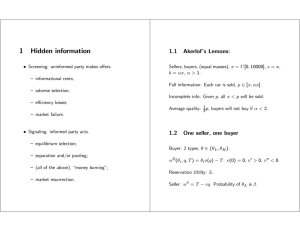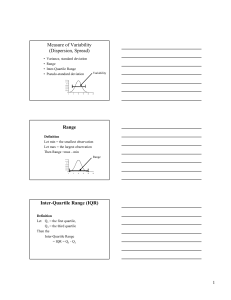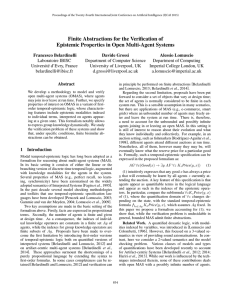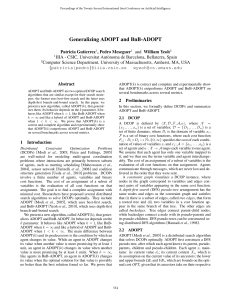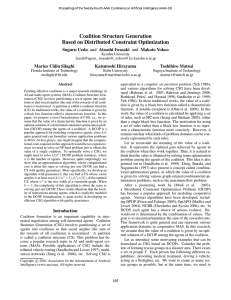Q4) part d) We are looking for a δ
advertisement
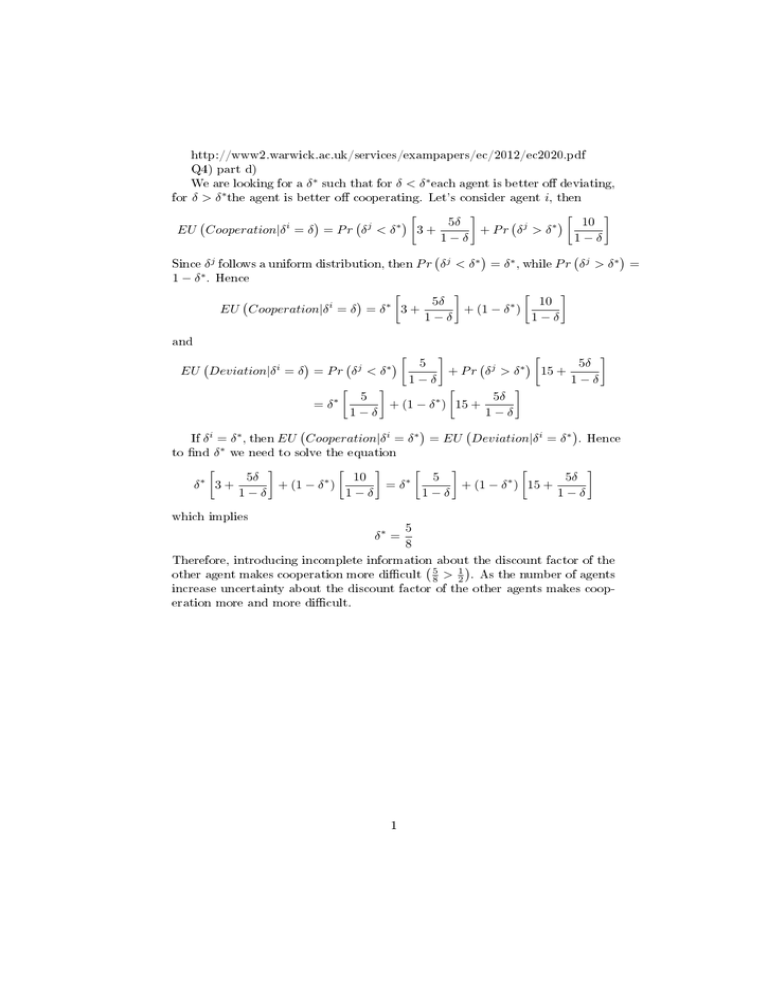
http://www2.warwick.ac.uk/services/exampapers/ec/2012/ec2020.pdf Q4) part d) We are looking for a δ ∗ such that for δ < δ ∗ each agent is better o deviating, for δ > δ ∗ the agent is better o cooperating. Let's consider agent i, then 10 5δ j ∗ + Pr δ > δ EU Cooperation|δ = δ = P r δ < δ 3+ 1−δ 1−δ Since δ j follows a uniform distribution, then P r δ j < δ ∗ = δ ∗ , while P r δ j > δ ∗ = 1 − δ ∗ . Hence 10 5δ ∗ i ∗ + (1 − δ ) EU Cooperation|δ = δ = δ 3 + 1−δ 1−δ i ∗ j and 5 5δ j ∗ EU Deviation|δ = δ = P r δ < δ + Pr δ > δ 15 + 1−δ 1−δ 5δ 5 + (1 − δ ∗ ) 15 + = δ∗ 1−δ 1−δ If δ i = δ ∗ , then EU Cooperation|δ i = δ ∗ = EU Deviation|δ i = δ ∗ . Hence to nd δ ∗ we need to solve the equation 5δ 10 5δ 5 ∗ ∗ ∗ ∗ δ 3+ + (1 − δ ) =δ + (1 − δ ) 15 + 1−δ 1−δ 1−δ 1−δ i j ∗ which implies δ∗ = 5 8 Therefore, introducing incomplete information about the discount factor of the other agent makes cooperation more dicult 58 > 21 . As the number of agents increase uncertainty about the discount factor of the other agents makes cooperation more and more dicult. 1
